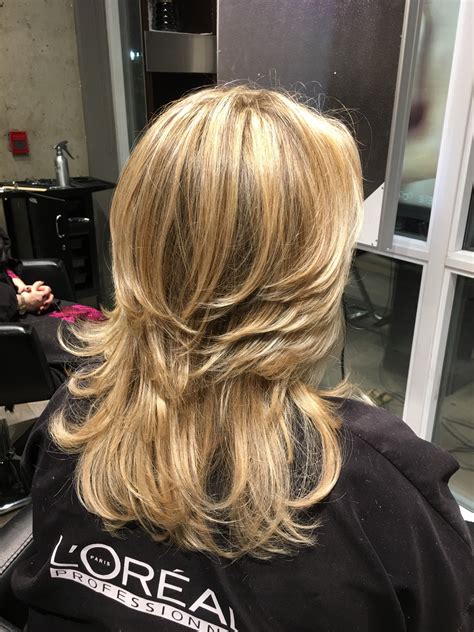Introduction
Fine hair lacks natural volume and thickness, making it prone to flatness and difficulty styling. Fortunately, hair extensions offer a versatile solution to transform fine hair, creating the illusion of fuller, thicker locks. However, not all weaves are suitable for fine hair, and choosing the right type is crucial to avoid damage and achieve optimal results.

1. Micro Weft Weaves: Delicate and Seamless
Micro weft weaves are ideal for fine hair due to their lightweight and seamless design. Thin wefts are hand-sewn into small sections of natural hair close to the scalp, providing a natural and undetectable look. Micro wefts offer a secure hold while minimizing weight on fine hair, reducing the risk of damage.
Pros:
– Natural and seamless
– Thin wefts prevent pulling or breakage
– Long-lasting (up to 6 months)
Cons:
– Can be time-consuming to install
– Requires skilled application to prevent damage
2. Tape-In Extensions: Affordable and Convenient
Tape-in extensions are another popular option for fine hair. Pre-taped wefts are pressed onto natural hair sandwiches, creating strong adhesion. Tape-in extensions are affordable and relatively easy to install with minimal risk to hair health.
Pros:
– Quick and easy to install (1-2 hours)
– Affordable compared to other methods
– Can be re-used multiple times
Cons:
– May cause irritation or damage to hair if improperly removed
– Not as durable as other weave types (lasts 4-8 weeks)
3. Keratin Bond Extensions: Strong and Durable
Keratin bond extensions utilize keratin tips that are fused to natural hair using heat. This method creates a semi-permanent extension that can last up to 6 months. Keratin bonds are strong and durable, providing extra support and volume to fine hair.
Pros:
– Long-lasting (4-6 months)
– Strong bond prevents slipping or shedding
– Can add significant volume and length to fine hair
Cons:
– Requires professional application
– Heat fusion can damage hair if not done properly
– Removal process is time-consuming and can cause breakage
4. Fusion Extensions: Ultra-Lightweight and Versatile
Fusion extensions use heat to bond individual strands of hair to natural hair. This method offers the most customization options in terms of thickness, length, and color. Fusion extensions are lightweight and virtually undetectable, while providing exceptional volume and versatility.
Pros:
– Ultra-lightweight and seamless
– Versatile for various lengths and thicknesses
– Long-lasting (4-6 months)
Cons:
– Requires professional installation and removal
– Heat application can damage hair if not done properly
– Can be expensive compared to other methods
5. Clip-In Extensions: Damage-Free Temporary Boost
Clip-in extensions provide a damage-free temporary solution to enhance fine hair. These wefts feature clips that attach to natural hair, allowing for quick and easy wear. Clip-in extensions can add instant volume and fullness without the commitment of semi-permanent methods.
Pros:
– Damage-free and easy to install
– Quick temporary solution (hours at a time)
– Can be customized to match hair color and style
Cons:
– Not suitable for permanent volume
– Clips may be visible if not applied properly
– May interfere with certain hairstyles
Common Mistakes to Avoid
When choosing and installing weave extensions for fine hair, it’s crucial to avoid common mistakes that can lead to hair damage or unsatisfactory results.
-
Over-processing: Chemical treatments, bleach, or excessive heat can weaken fine hair and increase the risk of breakage. Consult a professional before undergoing any chemical processes.
-
Improper installation: Seek skilled installation from a certified hair extension specialist to ensure secure attachment and prevent damage.
-
Excessive weight: Avoid overly thick wefts or too many extensions as this can weigh down fine hair and cause strain and breakage.
-
Neglecting maintenance: Regular maintenance and care, including gentle brushing and conditioning, are essential to preserve the health of fine hair with extensions.
Step-by-Step Approach to Weaving Fine Hair
-
Consultation: Discuss your desired look, hair type, and budget with a professional hair extension specialist.
-
Strand test: A small test is performed to determine the best weave method and avoid any allergic reactions to bonding agents.
-
Weave selection: Choose the weave type that best suits your individual needs and hair characteristics.
-
Installation: Extensions are carefully attached to fine hair using the chosen method, ensuring a secure and natural-looking result.
-
Styling: Create your desired look with the help of a professional stylist who understands the nuances of fine hair extensions.
-
Aftercare: Follow maintenance instructions to preserve the health and longevity of your weave extensions.
Conclusion
Transforming fine hair into voluminous, thick locks is possible with the right weave extensions and expert application. By considering factors such as hair type, lifestyle, and desired results, you can choose the best weave for your individual needs. By following the recommended steps and avoiding common mistakes, you can achieve a stunning and damage-free enhanced look.
